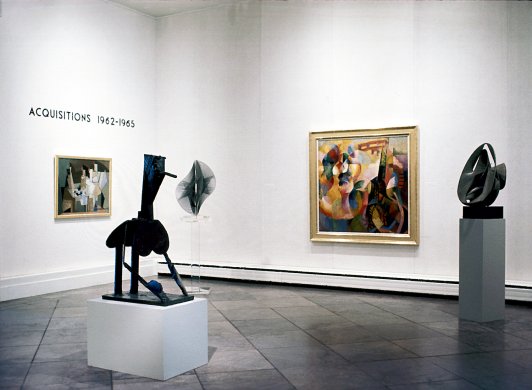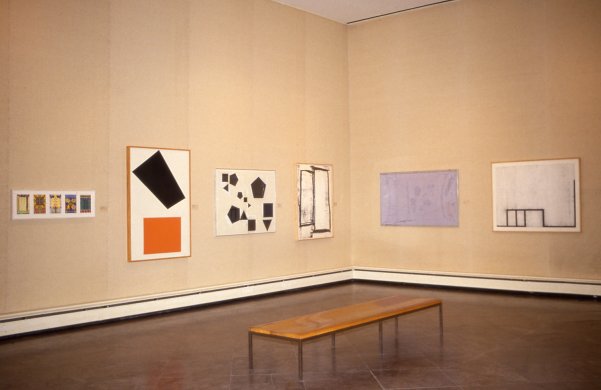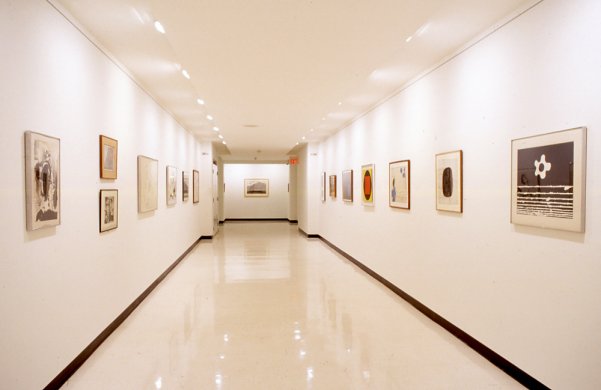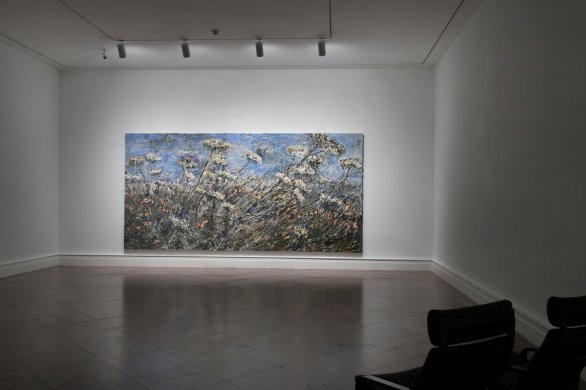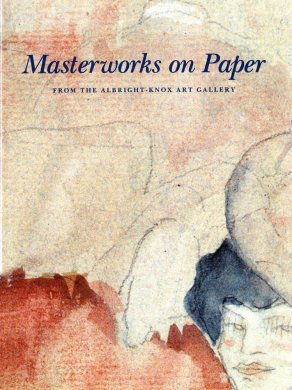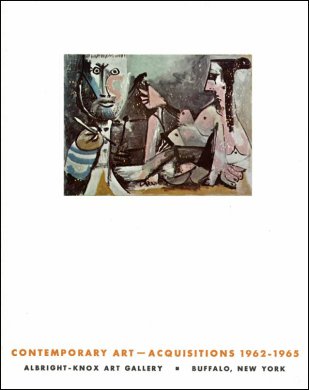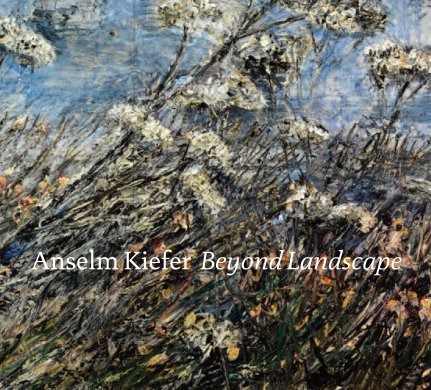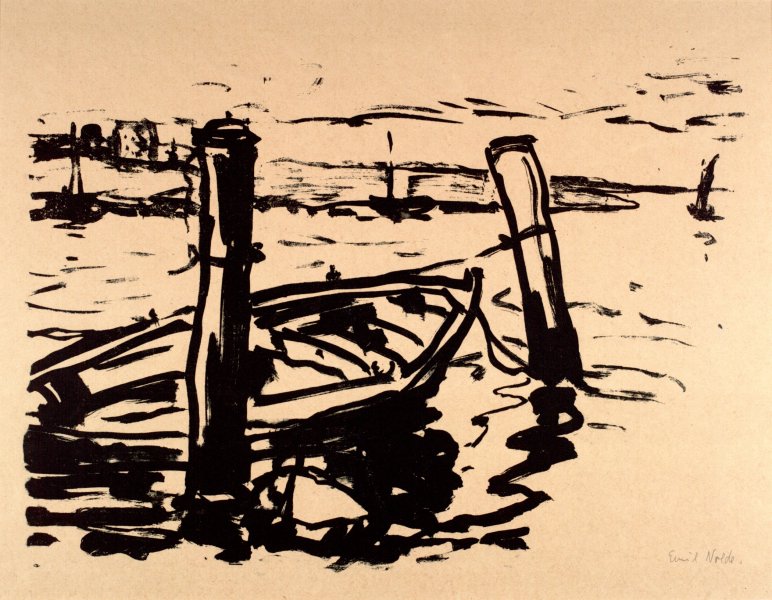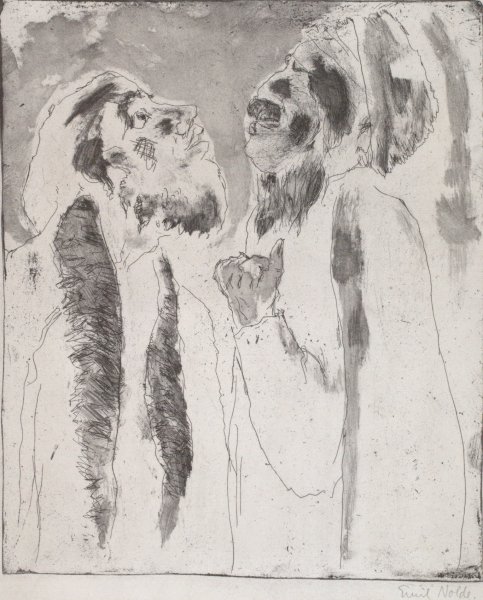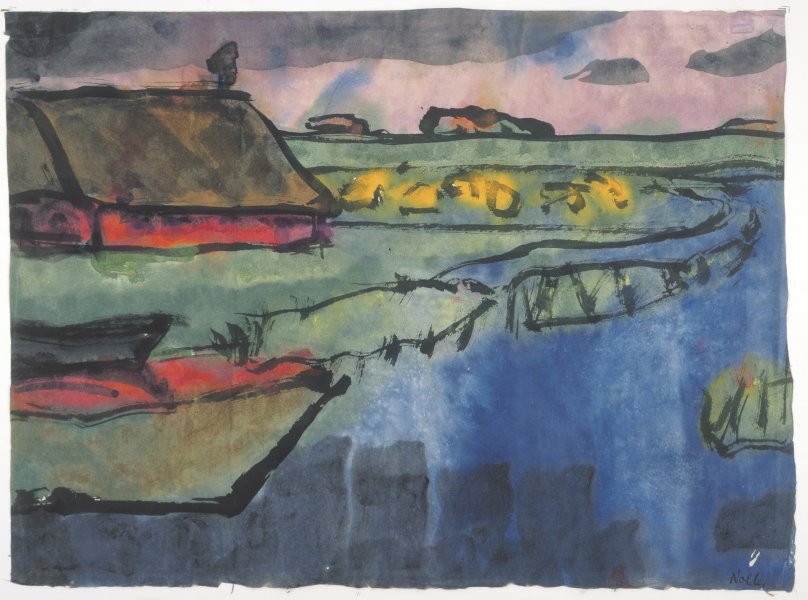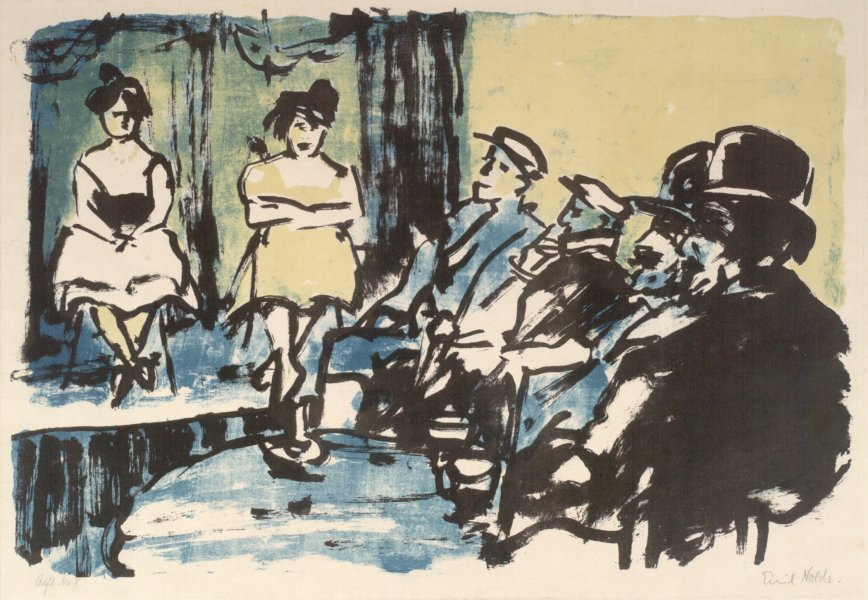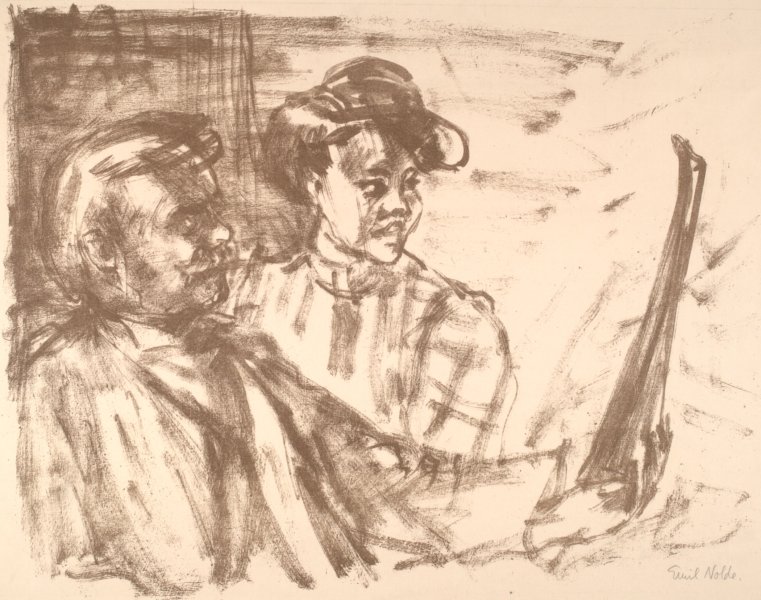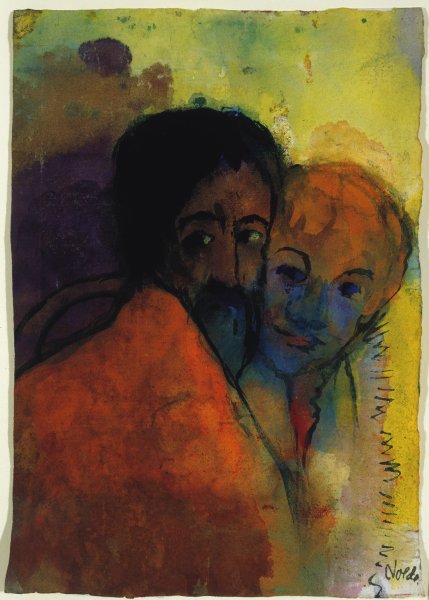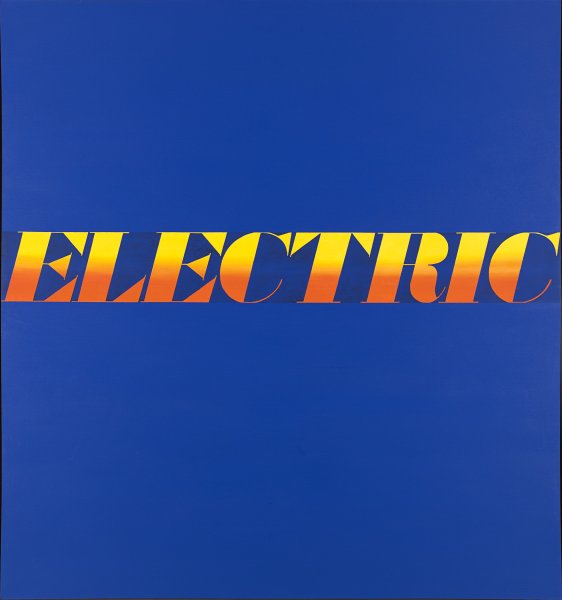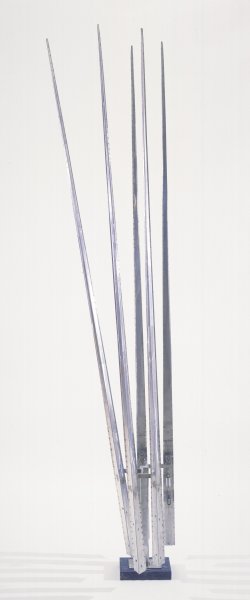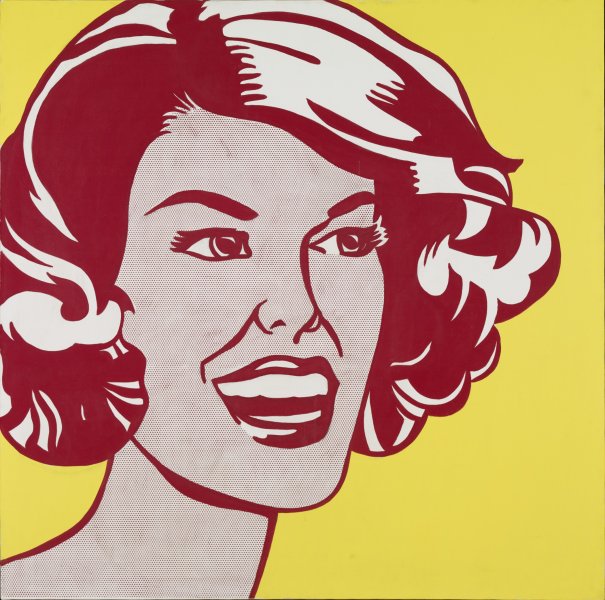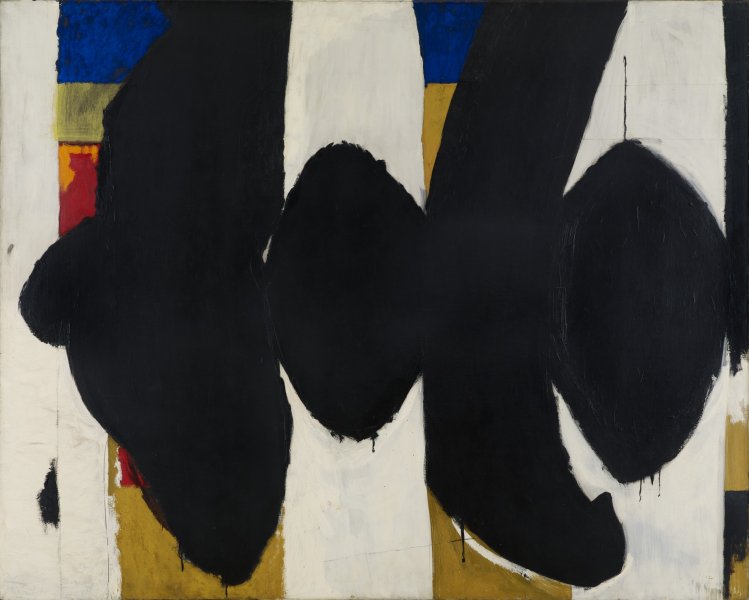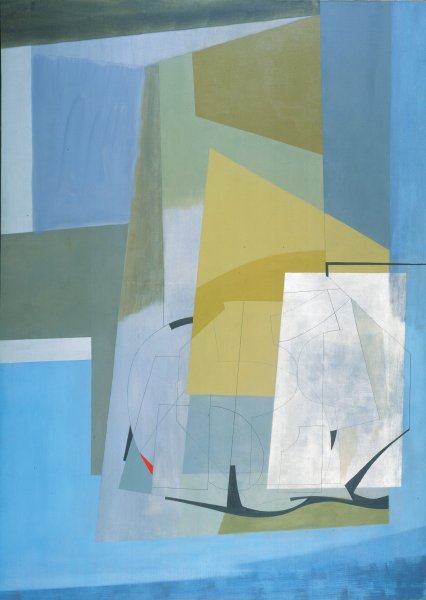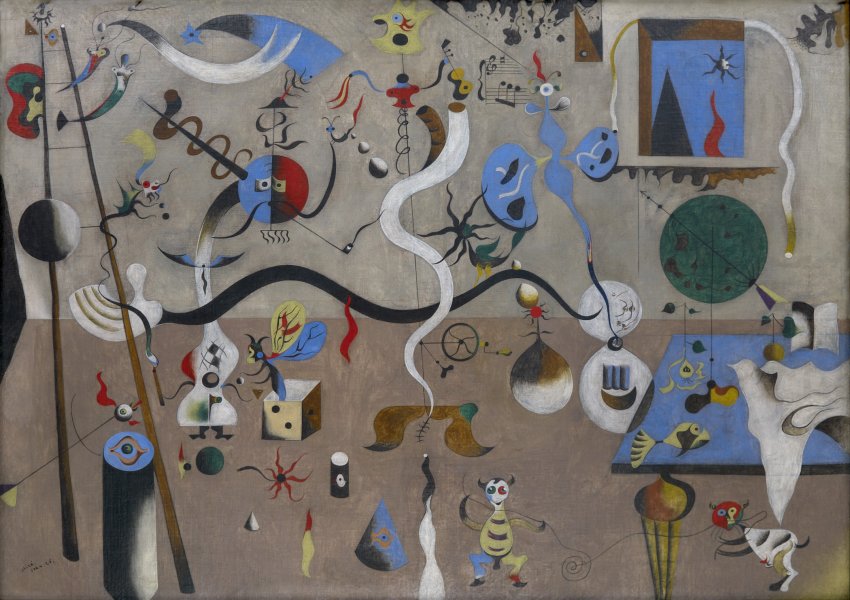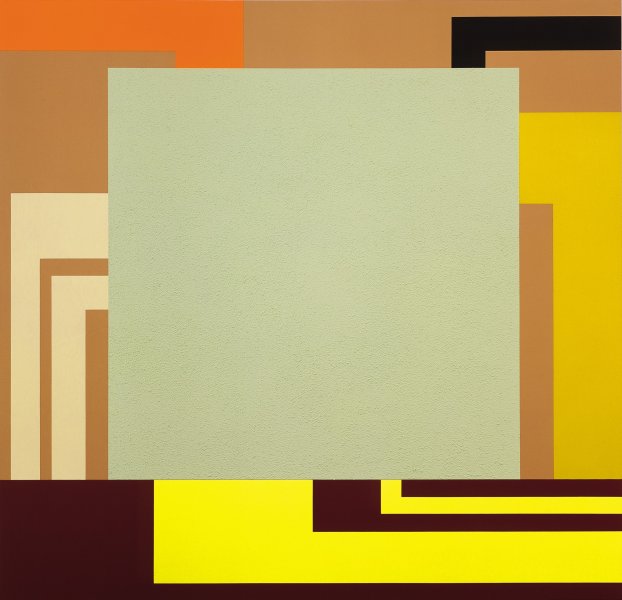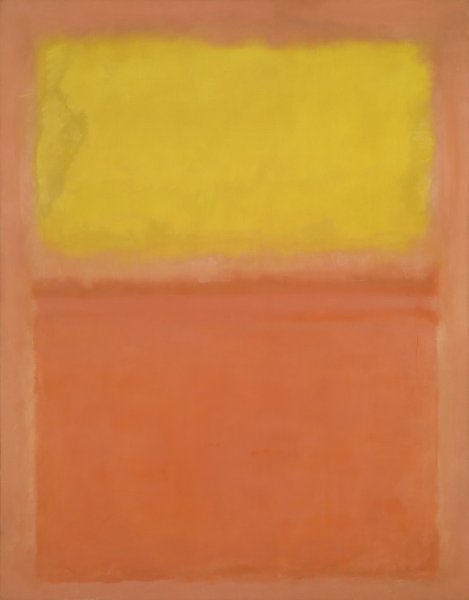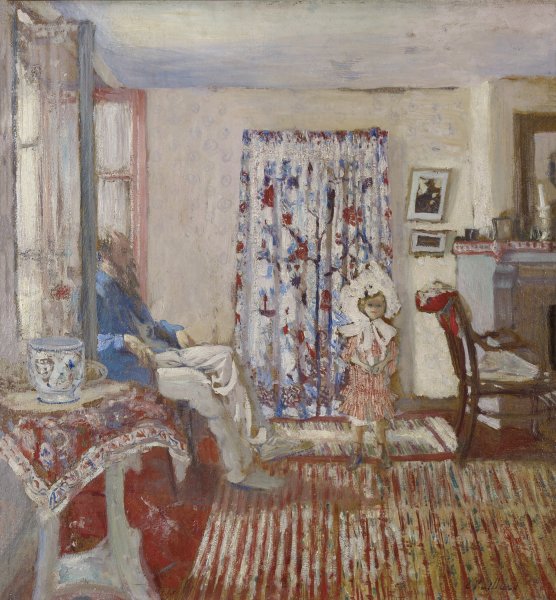Emil Nolde
German, 1867-1956
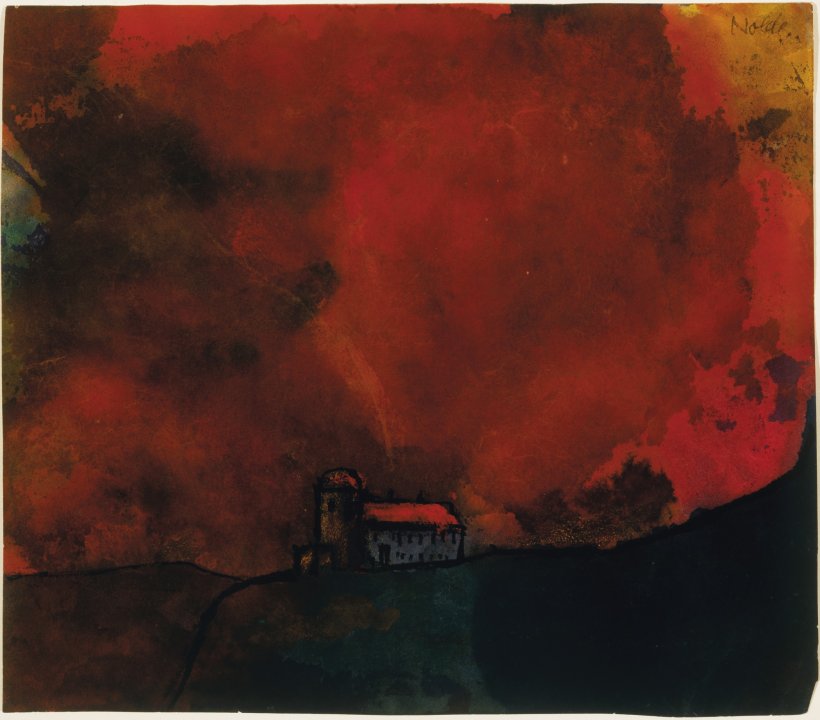
Romantic Landscape with Fortress, ca. 1941-1945
Artwork Details
Materials
watercolor and ink on paper
Measurements
sheet: 6 7/8 x 7 1/8 inches (17.46 x 18.1 cm)
Collection Buffalo AKG Art Museum
Credit
General Purchase Funds, 1965
Accession ID
1965:6
During the 1930s, Emile Nolde was branded a “degenerate artist” by the Nazi regime, which confiscated many of his works. Forbidden to paint, he found refuge in northern Germany, where he created small, easy-to-hide works he referred to as Ungemalte Bilder, or unpainted pictures. Although he preferred working with oil paint, he turned to watercolor out of fear that the smell of oil paint might be detected. Romantic Landscape with Fortress, one of the works he completed during this time, is believed to be a depiction of his countryside home, Seabüll. This image of a seemingly small building against the backdrop of an expansive sky at dusk reflects the great sense of psychological strain and isolation Nolde felt during what was surely a difficult period in his life. For Nolde, the landscape offered reprieve from political persecution.
Label from Anselm Kiefer: Beyond Landscape, November 17, 2013–October 5, 2014
